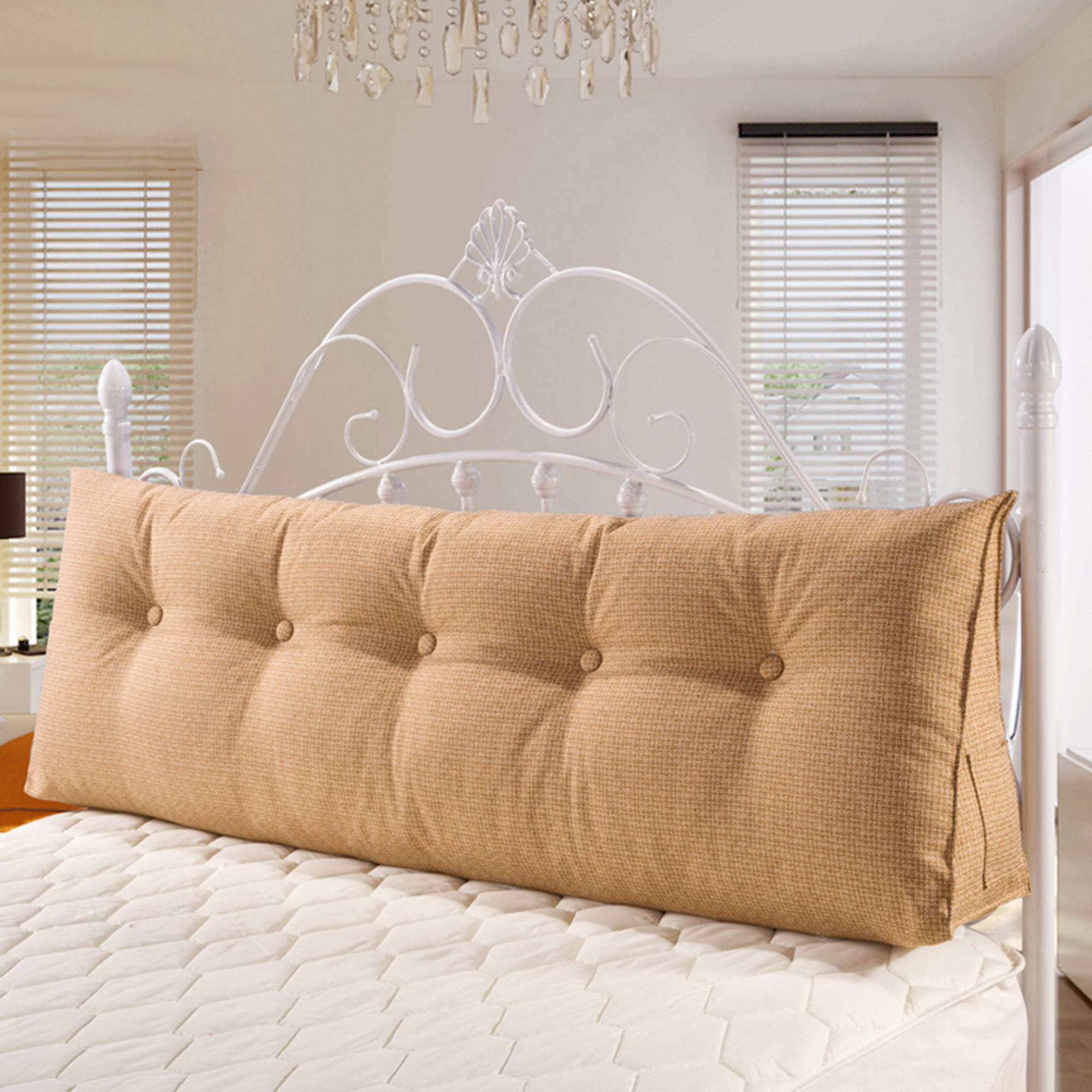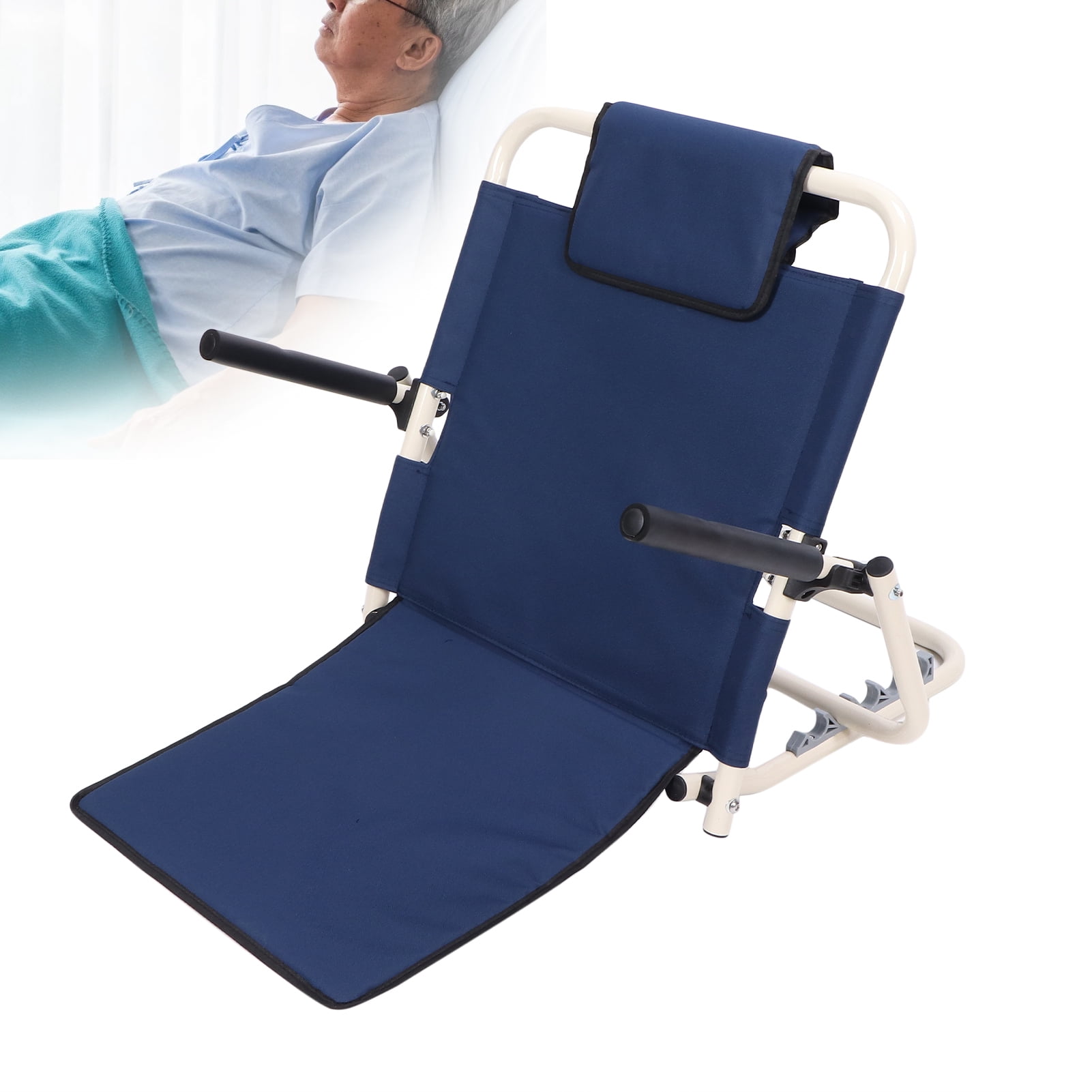Types of Back Support Chairs for Bed: Back Support Chair For Bed

Finding the right back support chair for bed can be a game-changer for your comfort and sleep quality. Whether you’re seeking relief from back pain, a cozy spot to read, or a way to elevate your legs, there’s a type of back support chair designed to meet your needs. Let’s explore the different options available and discover the best fit for you.
Wedge Pillows
Wedge pillows are a versatile option for back support, offering a range of benefits depending on their shape and size. They are typically triangular or trapezoidal, with a gradual incline.
Advantages of Wedge Pillows
- Improved Sleep Posture: Wedge pillows can help elevate your upper body, promoting proper spinal alignment and reducing pressure on your back. This can be particularly beneficial for people who experience back pain or acid reflux.
- Reduced Snoring: By elevating your head and chest, wedge pillows can help open up your airways, reducing snoring and improving breathing.
- Leg Elevation: Wedge pillows can be used to elevate your legs, promoting blood circulation and reducing swelling in the ankles and feet. This can be especially helpful for pregnant women or individuals with varicose veins.
Disadvantages of Wedge Pillows
- Limited Support: Wedge pillows may not provide sufficient support for individuals with severe back pain or those seeking a more substantial backrest.
- Limited Adjustability: Wedge pillows typically come in fixed sizes and shapes, limiting their adjustability to fit different body types and preferences.
- Potential for Discomfort: Some people may find wedge pillows uncomfortable, especially if they are not accustomed to sleeping with an incline.
Materials Used in Wedge Pillows
Wedge pillows are available in various materials, including memory foam, gel, and cotton. Memory foam offers contouring support and pressure relief, while gel pillows provide a cooler sleeping experience. Cotton pillows are a breathable and affordable option.
Lumbar Support Cushions
Lumbar support cushions are specifically designed to provide targeted support to the lower back region. These cushions are typically placed behind the lower back while sitting or lying down.
Advantages of Lumbar Support Cushions
- Reduced Back Pain: Lumbar support cushions can help alleviate back pain by providing support to the natural curve of the spine. This can be particularly helpful for individuals who experience lower back pain from sitting for long periods.
- Improved Posture: Lumbar support cushions encourage proper posture by promoting a neutral spine alignment. This can help reduce strain on the back muscles and prevent further pain.
- Increased Comfort: Lumbar support cushions can enhance comfort by providing a supportive base for the lower back, reducing pressure points and promoting relaxation.
Disadvantages of Lumbar Support Cushions
- Limited Support: Lumbar support cushions may not provide sufficient support for individuals with severe back pain or those seeking a more comprehensive backrest.
- Potential for Discomfort: Some people may find lumbar support cushions uncomfortable, especially if they are not accustomed to using them or if the cushion is not properly positioned.
- Limited Adjustability: Lumbar support cushions typically come in fixed sizes and shapes, limiting their adjustability to fit different body types and preferences.
Materials Used in Lumbar Support Cushions
Lumbar support cushions are often made from memory foam, gel, or cotton. Memory foam conforms to the shape of your back, providing personalized support and pressure relief. Gel cushions offer a cooling sensation and can be particularly helpful for people who tend to overheat. Cotton cushions are a breathable and affordable option.
Benefits of Using a Back Support Chair for Bed

Imagine yourself nestled comfortably in bed, but instead of feeling stuck, you have the freedom to sit up and enjoy a book, watch a movie, or simply relax. This is the magic of a back support chair for bed. It transforms your bed into a haven of comfort and functionality, offering a range of benefits that enhance your well-being.
Improved Posture
A back support chair promotes good posture by providing a supportive structure that aligns your spine correctly. When you sit up in bed, the chair’s design helps maintain the natural curves of your back, preventing slouching and reducing strain on your muscles and joints. This is especially crucial for individuals who spend extended periods in bed due to illness or injury, as maintaining good posture can help prevent further discomfort and complications.
Reduced Back Pain
Back pain is a common ailment that can significantly impact your quality of life. A back support chair can be a valuable tool in managing back pain, particularly for those with conditions like arthritis, spinal stenosis, or sciatica. The chair’s supportive structure provides relief from pressure on the spine, reducing pain and discomfort. It also allows you to sit up comfortably for longer periods without exacerbating back pain.
Enhanced Comfort
Beyond pain relief, a back support chair enhances overall comfort while sitting up in bed. The chair’s adjustable features allow you to find the perfect position for your body, ensuring maximum comfort and support. This is particularly beneficial for individuals who spend a lot of time in bed due to illness, injury, or pregnancy.
Benefits for Specific Conditions
Arthritis
For individuals with arthritis, the chair’s supportive structure can help alleviate pain and stiffness by reducing pressure on joints. The adjustable features allow for personalized comfort, enabling individuals to find a position that minimizes discomfort and maximizes mobility.
Spinal Stenosis
Spinal stenosis is a condition that causes narrowing of the spinal canal, putting pressure on nerves. A back support chair can provide relief by promoting proper posture and reducing strain on the spine. This can help minimize pain and improve mobility for individuals with this condition.
Sciatica
Sciatica is a condition that causes pain, numbness, and tingling in the leg due to compression of the sciatic nerve. A back support chair can provide relief by reducing pressure on the spine and promoting proper posture. This can help alleviate pain and improve mobility for individuals with sciatica.
Benefits for Pregnant Women
Pregnancy can be physically demanding, with many women experiencing back pain and discomfort. A back support chair can provide much-needed relief by supporting the spine and reducing pressure on the lower back. The chair’s adjustable features allow pregnant women to find a comfortable position that supports their growing belly and provides optimal comfort.
Benefits for Individuals with Illness or Injury
Individuals recovering from illness or injury often spend extended periods in bed. A back support chair can help improve their comfort and well-being by providing a supportive and adjustable seating option. This allows them to sit up comfortably without putting strain on their body, facilitating healing and recovery.
Choosing the Right Back Support Chair for Your Needs

Finding the perfect back support chair for your bed can feel like a daunting task, but it doesn’t have to be. Just like finding the right shoes or a comfortable pillow, choosing a back support chair requires considering your unique needs and preferences. This guide will help you navigate the world of back support chairs, ensuring you find the one that fits your body and lifestyle like a glove.
Factors to Consider When Choosing a Back Support Chair, Back support chair for bed
The key to finding the perfect back support chair lies in understanding your individual needs. Factors like your body type, height, weight, and preferred sleeping position all play a crucial role in determining the right chair for you.
- Body Type: If you are petite, a smaller and more compact chair might be more comfortable. On the other hand, taller individuals might need a chair with adjustable height or a wider base for stability.
- Height: A chair that’s too low might not provide adequate back support, while one that’s too high can strain your neck. Ideally, the chair should be positioned so your back is straight and your hips are slightly higher than your knees.
- Weight: The chair’s weight capacity is crucial for ensuring its durability and your safety. Choose a chair that can comfortably support your weight, leaving a margin for safety.
- Preferred Sleeping Position: Side sleepers might benefit from a chair with a contoured backrest that supports the natural curve of their spine. Back sleepers might prefer a chair with a more upright backrest, while stomach sleepers might need a chair with a lower backrest or a more flexible design.
Comparing Back Support Chair Features
Back support chairs come in various shapes, sizes, and materials, each with its unique set of features. The following table provides a comparative overview of some key features to consider:
| Feature | Adjustable Height | Firmness | Material |
|---|---|---|---|
| Type | Yes/No | Soft/Medium/Firm | Memory Foam/Polyester/Cotton |
| Pros | Provides customizable support for different heights | Offers varying levels of comfort and support | Provides different levels of comfort and breathability |
| Cons | Can be more expensive | May not be suitable for everyone | Some materials can be more expensive or difficult to clean |
Finding the Right Size and Support Level
Once you’ve considered the factors above, it’s time to find the perfect size and support level for your back support chair.
- Size: When trying out a chair, make sure it fits comfortably and provides adequate back support without feeling too tight or too loose.
- Support Level: The firmness of the chair is a matter of personal preference. Some people prefer a firm chair for added support, while others find a softer chair more comfortable. Experiment with different levels of firmness to find what works best for you.